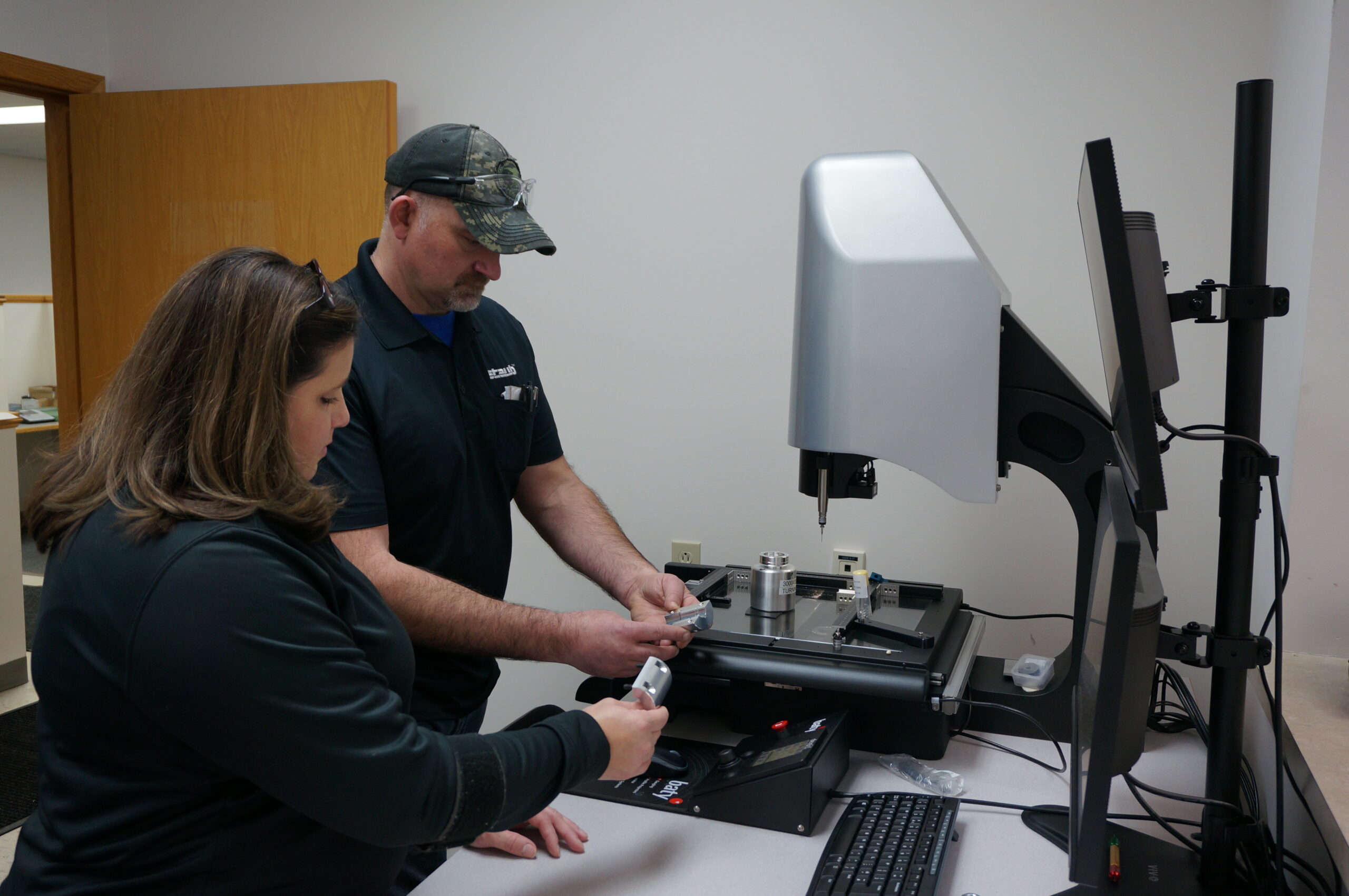Design for Manufacturing and Assembly (DFMA) is an engineering technique that optimizes production by reducing costs and time-to-market for manufactured products. This begins in the early phases of product design by simplifying how an item is assembled from its components into a final product. Though it’s become a singular manufacturing philosophy, DFMA emanates from the concepts of Design for Assembly (DFA) and Design for Manufacturing (DFM), techniques developed respectively in the mid-1970s and early 1980s. Key to the concept of DFMA is the utilization of precision machined parts.
Balancing DFMA Methods
DFA and DFM seek to optimize manufacturing processes by improving product design. However, their principles can sometimes negate each other. For example, using DFA techniques to reduce the number of parts within a product may lead to the need to fabricate overly complex precision machined parts that counteract any savings gained from having fewer components. DFMA combined DFA and DFM to balance the two methodologies by seeking a more holistic perspective on the manufacturing process.
Design for Assembly (DFA) looks at simplifying products by requiring fewer components and ensuring these can be easily gripped, relocated, positioned, and incorporated into the product. These methods are used to reduce production time and costs. DFA principles also include reducing human error while combining and standardizing the parts used in the final product.
Similarly, Design for Manufacturing (DFM) seeks to reduce manufacturing cost and time during the design phase, where such techniques are applied to be least disruptive to the manufacturing process. Concentrating on the actual fabrication of a product, DFM looks at ways to make the process quicker, less expensive, and simpler through design improvements. It often includes other factors like the type and form of raw materials, tolerances of precision machined parts, and secondary processes like finishing.
Fundamental parts of DFMA methodology revolve around:
- Materials: Manufacturing processes, material management, and quality control are all determined through the materials from which a product is made.
- Planning: It’s easiest to lower manufacturing costs by consulting with experts involved in the production stage about product design.
- Processes: It’s essential to understand how different manufacturing processes work to reduce costs, such as the use of CNC machining or other techniques in the making of machined parts.
- Standards: Using standard components with a product’s design reduces costs, improves inventory management, and decreases time-to-market.
Focus on these elements within the manufacturing process is important when manufacturers seek to lower costs and increase efficiency. DFMA is about implementing principles that optimize manufacturing to reduce the time, resources, and labor needed to make a product.
Principles of DFMA Methodology
DFMA methodology covers many principles that manufacturers must consider when designing a new product. It’s integral that these are applied in the early stages of design to influence the price, reliability, and quality of a product to end users. Decisions taken at the design stage affect the entire production process, so industrial designers must consider every element of a product’s design before it goes into production.
Modular Design
By making designs modular, a product can be broken down into each of its functional mechanisms. This reduces the number of unique components necessary to fabricate a specific product, allowing similar products to utilize the same precision machined parts. For example, a valve manufactured for one pump shaft may be designed to allow its use in other pump shafts. Utilizing modular design improves time-to-market, supports more sustainable manufacturing, reduces costs, makes keeping an inventory of necessary components less complicated, enables easier customizations, and allows more flexibility regarding future upgrades.
Fastening Devices
Many products include some fastening device, the installation of which is sometimes the source of bottlenecks within the overall assembly process. DFMA looks at optimizing fasteners to be easily and inexpensively installed to decrease costs, product weight, space requirements, and overall waste. DFMA guidelines for machined parts in fastening recommend snap-fit techniques, and rivets over screws for stronger bonding are preferable.
Error-Proofing Designs
This refers to using techniques to keep mistakes from happening during production to improve operational efficiency and allow the assembly of products with greater precision. Machined parts, as a rule, should be fabricated so that they’re always correctly oriented, with either manual or automatic interlocks installed to prevent defects or errors during production.
Part Reduction
Reducing the number of machined parts within a product offers many advantages during manufacturing as one of the more popular DFMA methods for optimizing production. Moderating the number of parts that make up a product reduces the number of prototypes needed during the design phase. It also lessens the number of steps necessary during assembly while also decreasing the need for individual analysis of each component. This technique also looks at consolidating the functions of a part, whenever possible, within a product to moderate the number of parts.
Standardization of Components
Standardizing components makes assembly less expensive without lowering precision. Machined parts made uniformly also tend to be more reliable than custom-made parts.
Limitations of Processes
DFMA encourages communications between designers and those directly involved in production to ensure suitable processes are followed to make production as efficient as possible.
Other DFMA Techniques
Some additional methods used in DFMA to make manufacturing more efficient include:
- Considerations for handling and orientation of machined parts during production
- Designing components that serve multiple functions
- Implementing automated manufacturing processes whenever possible
- Modifying products and processes to make assembly easier
- Removing flexible parts in products
Ready to automate your next job?
VIEW OUR EQUIPMENTBenefits of DFMA Techniques
DFMA provides benefits in both the long and short term. Utilizing these techniques gives manufacturers an advantage over competitors that don’t use these methods.
Shortens Time-to-Market
This is essentially the duration between when an idea for a product has been introduced to when it goes to market. Ideally, this should be as brief as possible. Simplifying manufacturing processes using DFMA methods can considerably reduce a new product’s time-to-market.
Lowers Costs for Product Development
Ideally, DFMA used during the initial design phase will resolve production issues before they become significant problems by removing the need for design changes later. It also allows manufacturers the opportunity to make provisions that enable the addition of features in the future.
Reduces Waste
DFMA techniques help eliminate unnecessary waste of materials and energy by optimizing manufacturing processes. It seeks to make production more efficient while minimizing the chance of defects. This often includes cutting out redundant steps during product assembly and removing unnecessary features in the product.
Improves Product Reliability
DFMA focuses on defect prevention while carefully evaluating relationships between the costs and benefits inherent in decreasing failure rates. Additionally, having fewer components in a product will naturally make it more reliable.
Quality Control
The use of DFMA methodology seeks to improve communication between different teams. For example, coordination between industrial designers and engineers involved directly in the manufacturing process will ensure both teams understand each other’s capabilities to achieve specific objectives. This helps guarantee products will be of the highest quality and reasonably priced.
Using DFMA for Precision Machined Parts
Employing DFMA principles requires designing components that work with the manufacturing processes used during production.
Undercuts
Cuts in a workpiece that can’t be fixed with standard cutting tools due to an obstruction require special cutting tools and design considerations. Depending on the cutting tool used, the width of undercuts ranges between 3–40 mm (.118-1.575 inches), with their depth up to double the width. If possible, avoiding undercuts for precision machined parts greatly reduces production times while increasing efficiency.
Wall Thickness
Unlike molded components that deform when walls get too thick, precision machined parts won’t work well if their walls are too thin. For this reason, product designers should ensure designs call for minimum wall thicknesses for parts of 0.8 mm (.031 inch) for metal or 1.5 mm (.059 inch) for plastics. However, if thin walls are essential in the design, injection molding can be used instead.
Protrusions
With precision machined parts, sections that protrude too high from the surface are challenging to the machine since the cutting tool’s vibrations can damage the segment or keep the component from fitting precisely. For this reason, the height of any protruding features should reach no more than four times the width of the workpiece.
Cavities, Holes & Threads
Precision machined parts depend on the cutting tools used. Similar to protrusions, any cavities in a machined component must be no more than four times the depth as the cavity’s width. This includes holes made with drill bits, though these should be consistent with standard bit sizes whenever feasible. However, threads that fit in fasteners like screws only need to reach three times the diameter of the hole.
Scale
The machine’s build envelope limits the size of precision machined parts made with CNC cutting tools. For milled parts, measurements should reach dimensions no greater than 400 mm (15.478 inches) x 250 mm (9.843 inches) x 150 mm (5.901 inches), while turned parts should reach dimensions no greater than 500 mm (19.685 inches) x 1000 mm (39.37 inches). Though larger machines can increase these measurements, consulting with those machining the parts is advisable.
In-House Engineering and DFMA: Why It’s a Win for Customers
Staub’s in-house engineering team and Design for Manufacture and Assembly (DFMA) capabilities emphasize our continual commitment to finding the best solutions for our customers. With our cutting-edge equipment and focus on automated manufacturing technologies, Staub produces only the highest quality components. Through the use of advanced computer-controlled systems, we can achieve precision tolerances with greater efficiency. Because DFMA occurs early in the design phase, it allows our in-house engineers to observe the part and discover real-time areas of improvement.
Ready to talk about your next project?
CONTACT US TODAYAs your trusted partner, Staub Precision Machine, Inc. looks beyond the machining process to continually maximize efficiency, improve design, and cut costs. We offer various solutions for producing precision machined parts utilizing DFMA techniques. Contact the experts at Staub today to learn more about how we can assist your production needs.



